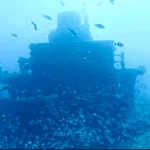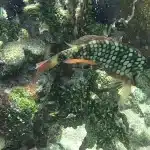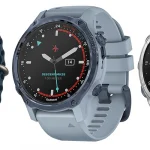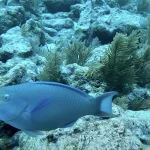Understanding Moon Phases and Their Impact on Bioluminescence
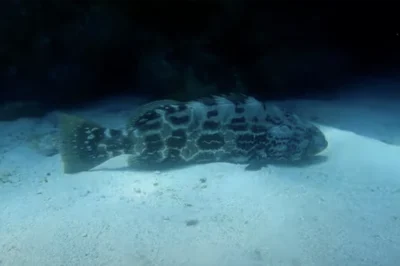
Table of Contents
- Understanding Moon Phases and Their Impact on Bioluminescence
- The Science Behind the Glow: How Bioluminescence Works
- Top Night Diving Spots in Key Largo for Bioluminescence
- Common Mistakes in Night Diving and How to Avoid Them
- Debunking Myths: Night Diving and the Moon’s Influence
- Future Trends: How Climate Change Might Affect Bioluminescence
- The New Moon Advantage: Planning for Optimal Visibility
- Statistical Insights: Bioluminescence Patterns Across the Lunar Cycle
Introduction
Dive deep into the world of night diving in Key Largo, where the lunar cycle plays a pivotal role in creating mesmerising underwater light shows. Discover why the new moon is the perfect time to experience bioluminescence at its most vibrant, and learn how to maximise your diving adventures by aligning with the moon’s phases.
Understanding Moon Phases and Their Impact on Bioluminescence
The Science Behind the Glow: How Bioluminescence Works
Bioluminescence in marine organisms is a fascinating natural phenomenon driven by intricate chemical and biological processes. At its core lies a chemical reaction between a molecule called luciferin and the enzyme luciferase. When luciferase catalyses the oxidation of luciferin in the presence of oxygen, it produces light efficiently with very little heat loss, often called “cold light.” This remarkable efficiency means almost all the chemical energy is converted into visible light, illuminating marine environments with minimal energy waste.
Different marine species have evolved variants of this system. For example, some jellyfish utilise photoproteins that react with calcium ions instead of oxygen, providing precise control over light production. The emitted light is mainly in the blue and green wavelengths, colours that travel farther through seawater and thus are ideal for communication, camouflage, or attracting prey. Some deep-sea creatures, however, produce red or yellow light, which travels less far but helps them remain inconspicuous in very dark habitats.
From an evolutionary perspective, bioluminescence is thought to have arisen independently over 40 times in marine life, a prime example of convergent evolution. One prevailing theory highlights its origins as a mechanism to neutralise harmful reactive oxygen species through molecules like coelenterazine, which later adapted to serve as light emitters. Besides chemical adaptations, many organisms have developed specialised organs called photophores or engage in symbiotic relationships with bioluminescent bacteria to generate their glow.
The visibility of bioluminescence is closely linked to the ambient light environment, particularly the lunar cycle. During a New Moon, the absence of moonlight drastically enhances the visibility of bioluminescent displays. Many nocturnal plankton and other light-producing species time their activity to the darker nights, increasing their luminescence as a defence mechanism against predators that rely on sight. Conversely, during Full Moon periods, bright moonlight can diminish how noticeable bioluminescence is, influencing predator-prey dynamics and sometimes causing organisms to reduce or alter their light production.
These biological rhythms enable marine creatures to adapt their bioluminescent output in tune with lunar phases, optimising survival and communication. In Key Largo’s waters, this means night dives around the New Moon offer the best chances to witness dazzling marine light shows, as the darkness allows these natural illuminations to shine at their brightest.
The Science Behind the Glow: How Bioluminescence Works
Top Night Diving Spots in Key Largo for Bioluminescence
Key Largo offers a variety of night diving sites renowned for their vibrant marine ecosystems, where bioluminescent encounters can enrich the underwater experience. While bioluminescence itself is typically subtle and subject to environmental conditions, certain locations in Key Largo consistently draw divers eager to witness the interplay between nocturnal creatures and their glowing, bio-emitted light.
Prime Night Dive Locations
- Benwood Wreck: This historic shipwreck sits at accessible depths ranging from 25 to 45 feet and is a hotspot for nocturnal predators such as nurse sharks and moray eels. The wreck’s structure creates diverse habitats where bioluminescent plankton and small crustaceans can often be observed flashing with movement, providing a dramatic nighttime spectacle.
- Molasses Reef: Renowned for its bright coral formations and abundant sea life, this site spans shallow to moderate depths, allowing divers to explore rich biodiversity. The reef’s complex structures increase the chance of encountering glowing organisms like certain shrimp and worms active during night hours.
- Snapper Ledge: Favoured for its vibrant population of lobsters, shrimp, and other crustaceans, this dive site allows divers to see bioluminescent bursts when these creatures move or are disturbed, adding a magical quality to the dive.
- Pickles Reef: Featuring remnants of shipwrecks and a healthy coral ecosystem, this site is attractive for those seeking easy access to bioluminescent displays. Its shallow waters make it ideal for novice night divers eager to experience glowing marine life.
- Conch Wall: A drift dive along a gentle slope, Conch Wall offers encounters with octopuses, brittle stars, and crabs — some of which can generate faint bioluminescent glows, especially when disturbed in the darkness.
Unique Bioluminescence Experiences and Timing
For divers looking to elevate their night dive, fluorescent diving offered by local operators like Keys Diver adds a spectacular layer to the experience. Using specialised blue lights and viewing filters, this technique reveals coral and marine life fluorescence in vivid, otherworldly colours reminiscent of cinematic underwater scenes.
Bioluminescent activity in Key Largo tends to be most noticeable during the warmer months of May through October, when water temperatures foster higher concentrations of bioluminescent organisms. However, faint glows and occasional displays can be witnessed year-round, particularly when moonlight is minimal, such as during new moon phases.
Diver Insights and Recommendations
- Divers frequently praise Benwood, Molasses Reef, and Snapper Ledge for the rich nocturnal life that supports bioluminescence, noting the dramatic contrast between predator and prey illuminated by tiny glowing sparks.
- Pickles Reef and Conch Wall are valued for their accessibility and unique species, making them excellent choices for both novice and experienced night divers seeking luminous encounters without complicated currents.
Conservation and Safety Tips
- Engage respectfully with the environment by using red dive lights to preserve night vision and minimise disturbance to nocturnal species.
- Maintain the buddy system diligently during night dives to ensure safety amidst limited visibility.
- Support coral restoration initiatives frequently conducted at sites like Pickles Reef, contributing to the sustainability of these ecosystems vital for bioluminescent organisms.
- Avoid wearing shiny jewellery that can reflect artificial light and disrupt marine life behaviour, preserving the natural bioluminescent ambience.
By choosing these well-regarded dive sites and adhering to safety and conservation practices, scuba enthusiasts visiting Key Largo can maximise their chances of experiencing mesmerising bioluminescent displays that turn night dives into unforgettable adventures.
Top Night Diving Spots in Key Largo for Bioluminescence
Common Mistakes in Night Diving and How to Avoid Them
Night diving in Key Largo offers incredible experiences, especially with the interplay of moon phases on bioluminescence and marine activity. However, divers often make avoidable mistakes that can compromise safety and the quality of the dive, particularly when ignoring lunar effects. Understanding these pitfalls—and how to circumvent them—enhances both safety and enjoyment.
1. Ignoring Lunar Cycles and Their Effects on Currents
Strong tidal currents caused by full and new moon phases present substantial challenges. These lunar tides amplify water movement, often creating stronger currents that can quickly tire divers, especially if unprepared. Diving without factoring in these tides risks unexpected drifts or separation from the group.
- Avoidance strategy: Plan night dives around neap tides (quarter moon phases) when currents are gentler. Consult local tidal charts and dive operators in Key Largo for current insights.
- Use reef hooks or surface marker buoys (SMBs) to secure position when needed, minimising drift risks.
2. Misjudging Lunar Light Impact on Marine Behaviour
Bright moonlight influences nocturnal species behaviour, altering their feeding and movement patterns. While the new moon offers the darkest conditions—maximising bioluminescent displays—full moons attract or agitate certain predators like sharks. Diving during bright moonlight without proper preparation can increase encounters with wary animals or reduce visibility of bioluminescence.
- Avoidance strategy: Schedule dives to start after moonset or during darker phases to optimise sightings of bioluminescent organisms.
- Use red dive lights to protect night vision and avoid startling marine life.
3. Selecting Unfamiliar or Unsafe Dive Sites at Night
Diving unfamiliar sites with lunar phase-driven currents or limited visibility increases the risk of disorientation and accidents. Under low light, navigational challenges multiply, making a thorough knowledge of the site critical.
- Avoidance strategy: Stick to well-explored dive spots in Key Largo, especially for night dives, and review topographical features during daylight dives.
- Ensure dive buddies and surface teams remain connected with signalling devices and SMBs equipped with GPS if possible.
4. Neglecting Local Expertise and Lunar Cycle Knowledge
Failing to leverage local dive operators’ expertise on how lunar phases influence marine life and currents is a costly mistake. In Key Largo, guides tailor outing details based on moon phases to maximise safety and wildlife encounters.
- Avoidance strategy: Always consult with local dive shops or guides who understand key lunar timings for optimal diving conditions.
- Use lunar calendars to plan dives around bioluminescent peaks and safer current windows.
5. Poor Buoyancy Control in Low Light Conditions
Maintaining neutral buoyancy at night is challenging but vital. Poor buoyancy control leads to excessive stirring of sediment, smothering coral and obscuring visibility. Moon-phase-driven currents exacerbate this, requiring careful trim and control.
- Avoidance strategy: Practise buoyancy skills during daytime dives before night diving.
- Use cues such as depth gauges and steady swim pace to maintain position without disturbing the environment.
By carefully timing dives according to lunar phases, respecting the lunar-driven environmental changes, and honing night diving skills, divers visiting Key Largo can safely unlock the mesmerising underwater glow of bioluminescence and enjoy the wonders of the reef at night.
Common Mistakes in Night Diving and How to Avoid Them
Debunking Myths: Night Diving and the Moon’s Influence
It’s a common belief that the moon’s phase alone dictates the quality of night diving experiences and the intensity of bioluminescence, but scientific insights and seasoned expert observations reveal a more nuanced picture. Understanding the moon’s real influence helps divers in Key Largo and other hotspots plan dives that maximise both safety and spectacle.
Myth 1: The New Moon Always Guarantees the Best Bioluminescence
While many divers are taught that the darkest nights during a new moon provide the best conditions for viewing bioluminescence due to minimal ambient light, this is only part of the story. The position of the moon relative to your dive time is often more critical than its phase. For example, a late-rising third-quarter moon can mean near-total darkness during early night dives, offering prime visibility even when it isn’t a new moon. Conversely, a full moon below the horizon allows dark conditions comparable to a new moon, while a new moon near the horizon at dive time may not provide the anticipated darkness.
Divers should consult local moonrise and moonset times alongside lunar calendars rather than rely solely on the lunar phase for planning bioluminescence encounters.
Myth 2: Moon Phase Directly Controls Marine Life Activity and Bioluminescence
Lunar phases influence marine life behaviour through complex biological clocks and environmental cues, but the relationship is not a straightforward “more light equals more activity” rule. Some bioluminescent plankton increase their glow during darker phases as a predator avoidance strategy, while others adjust their activity based on tidal and water conditions rather than moonlight itself.
- Species like squid can modulate their bioluminescence to match ambient light and avoid predators, making their visibility linked to moon brightness but not necessarily tied to a specific lunar phase.
- Coral spawning events often correlate loosely with lunar phases, sometimes peaking a few days after full moons, but this varies with location and environmental conditions.
- The key driver for marine life presence and bioluminescence concentrations is often nutrient availability, water temperature, and weather conditions rather than moon phases alone.
Myth 3: Tide Strength and Visibility Align Perfectly with Lunar Phases
Many divers expect calmer waters and better dive conditions during certain moon phases. The reality is that spring tides, which coincide with new and full moons, often produce stronger currents and higher water turbulence, potentially reducing visibility due to stirred sediments. Neap tides during quarter moons usually yield calmer, clearer waters but may not align with peak bioluminescence activity.
This trade-off means divers should balance the desire for optimal bioluminescence with conditions safe and comfortable enough for night dives—choosing calm waters during neap tides if visibility is paramount, but targeting peak bioluminescent phases when conditions allow.
Practical Tips for Key Largo Night Divers
- Check both the moon phase and moonrise/moonset times to ensure dives occur during the darkest possible segment of the night.
- Monitor local tide charts—plan dives when currents are moderate enough for safety but moon conditions favour bioluminescence visibility.
- Consider weather and water clarity forecasts, as plankton concentrations and bioluminescence intensity are heavily influenced by environmental factors beyond lunar cycles.
- Balance dive goals: choose new moon phases for spectacular plankton glows, but explore full moon nights for potential sightings of larger marine life and unique behaviours such as spawning.
By debunking these myths with science-backed insights, divers can optimise their Key Largo night diving trips, ensuring an extraordinary underwater experience informed by more than just superstition or simplified lunar lore.
My Favorite Dive Computers
I have compared the 3 top diving computers for each category to help making the right choice easier:
Debunking Myths: Night Diving and the Moon’s Influence
Climate Change Impacts on Bioluminescence: What Divers Should Know
Climate change is a significant force reshaping marine ecosystems, and its impact on bioluminescent organisms is both complex and species-specific. For divers in Key Largo who cherish night dives featuring spectacular bioluminescence, understanding these changes helps anticipate how underwater light shows may evolve and what new challenges or surprises might emerge.
Ocean Acidification and Bioluminescence Intensity
One critical driver of change is ocean acidification, which is expected to reduce seawater pH from around 8.1 to 7.7 by the year 2100. This shift impacts the chemical mechanisms behind bioluminescent light production differently among species:
- Some species glow brighter: For example, sea fireflies (Vargula hilgendorfii) demonstrate up to a 20% increase in luminescence under acidic conditions, making their glowing displays even more vivid.
- Others dim substantially: The firefly squid (Watasenia scintillans) may suffer a 70% drop in brightness, risking communication breakdowns and increased predation vulnerability.
This variation arises from different bioluminescent chemical compounds and enzyme sensitivities to pH changes, meaning that effects of acidification on bioluminescence are difficult to uniformly predict but essential for informing conservation efforts.
Warming Oceans Altering Bioluminescent Behaviour and Distribution
Rising sea temperatures further complicate how bioluminescent organisms behave and survive. Temperature fluctuations can disrupt the biochemical pathways controlling light emission:
- Species like the dinoflagellate Pyrocystis fusiformis may experience altered light intensity, duration, or flashing frequency, impacting reproductive signalling and predator evasion.
- Warmer waters may favour adaptable bioluminescent plankton like dinoflagellates, potentially increasing the frequency and scale of glowing plankton blooms, sometimes accompanied by toxicity that could affect local fisheries.
- Some bioluminescent species might shift their geographic ranges, moving to cooler depths or latitudes, which could reshape Key Largo’s nighttime diving experience over coming decades.
Ecological and Conservation Implications for Key Largo Divers
These biological changes bear several implications for diving enthusiasts and marine management:
- Variability in nighttime spectacle: Expect fluctuations in bioluminescent intensity and diversity depending on species’ resilience to acidification and warming, potentially leading to more vibrant or diminished displays.
- Changes in ecosystem balance: Shifts in dominant bioluminescent species can affect food webs, such as reduced nutritional quality when smaller, more abundant dinoflagellates replace larger plankton, influencing local fish populations.
- Need for adaptive conservation: Protecting climate refugia zones around Key Largo and monitoring bioluminescent species help sustain these unique ecosystems and their dazzling nighttime displays for future divers.
By understanding these trends, divers can better appreciate the delicate balance sustaining bioluminescence in Key Largo’s waters and advocate for environmental actions to preserve this captivating natural wonder.
Future Trends: How Climate Change Might Affect Bioluminescence
Maximising Night Dive Visibility: Planning Around the New Moon in Key Largo
For scuba divers seeking the most dazzling bioluminescent displays in Key Largo, timing dives during the new moon phase is essential. The new moon offers darker skies, significantly reducing ambient light, which allows the natural glow of bioluminescent organisms to stand out vividly. This is because bioluminescence is best appreciated when little to no external light interferes with the faint, ethereal blue-green flashes emitted by marine life disturbed by movement.
Why the New Moon Enhances Bioluminescence
- Minimal Moonlight: Unlike fuller moon phases, a new moon emits no reflected sunlight, eliminating the competition that otherwise dims bioluminescent glows.
- Dark Sky Conditions: These conditions amplify the contrast between the glowing organisms and the surrounding water, providing striking underwater visuals.
- Seasonal Timing: The summer months in Key Largo often see peak activity for dinoflagellate blooms, the single-celled plankton responsible for many bioluminescent effects, which aligns well with the new moon calendar for spectacular viewing opportunities.
How to Plan Your Night Dive for Optimal Visibility
- Check the Lunar Calendar: Schedule your dive within a few days before and after the new moon to maximise darkness.
- Select Prime Dive Sites: Coastal areas with a history of bioluminescent concentration, especially shallow zones where water disturbance activates the glow, are ideal.
- Factor in Weather Conditions: Cloud cover can act like a natural blackout curtain, enhancing visibility even on nights with some moonlight.
- Consider Guided Dives: Experienced guides know local hotspots and how to navigate conditions that maximise bioluminescence encounters.
Equipment and Safety Tips for Night Diving Bioluminescence
- Use Red Dive Lights: Red lighting preserves night vision and reduces disturbance to marine life so that the natural glow remains prominent.
- Buddy System: Maintain close communication to manage navigation and safety in low-light conditions.
- Bring Backup Gear: Carry additional light sources, cutting tools, and signalling devices for emergencies.
While some divers also enjoy fluorescent night diving with blue lights that highlight coral fluorescence — a different but complementary experience — planning your dive around the new moon remains the best method to witness the awe-inspiring natural bioluminescence unique to Key Largo waters.
The New Moon Advantage: Planning for Optimal Visibility
Statistical Patterns of Bioluminescence Across the Lunar Cycle
Bioluminescence exhibits a pronounced relationship with the phases of the moon, strongly influencing both the intensity and visibility of these natural light displays. For scuba divers visiting Key Largo, understanding these patterns is essential to optimising night dives for spectacular bioluminescent encounters.
Lunar Phase Impact on Visibility:
- New Moon (Optimal Viewing): Bioluminescent activity peaks and appears most vivid during the new moon phase. The absence of moonlight reduces ambient illumination, allowing the glowing organisms—such as dinoflagellates in summer and comb jellies in winter—to stand out against the dark water backdrop. This phase offers divers the clearest and brightest bioluminescent displays.
- Waxing and Waning Phases: Days just before and after the new moon remain excellent times to observe bioluminescence because moonlight is still minimal, preserving good visibility.
- First Quarter and Full Moon (Suboptimal to Poor Viewing): As moonlight increases in the waxing phases, the contrast between bioluminescence and ambient light diminishes. In the first quarter and full moon phases, the brightness often overwhelms the faint glows of bioluminescent creatures, making for poor viewing conditions.
Quantitative Insights: Research on glow-worm larvae, a bioluminescent species studied extensively, found an inverse correlation coefficient of approximately -0.75 between lunar brightness and bioluminescent activity. This means as the moon’s illumination intensifies, bioluminescence diminishes almost proportionally, underscoring why darker nights yield better displays. Additionally, these organisms show distinct activity peaks during darker lunar phases throughout the year, reinforcing the cyclical nature of this relationship.
Biological Rhythms and Molecular Processes: Beyond visual observations, studies have discovered lunar-phase-linked gene expression in marine species, affecting cellular activities related to bioluminescence. For instance, calcium signalling and cell cycle dynamics in corals vary across lunar phases, which may indirectly influence bioluminescent behaviours.
Optimal Viewing Recommendations for Key Largo Divers
- Schedule dives around the new moon: Aim for nights within one week before and after the new moon to maximise darkness and visibility.
- Plan according to season: Dinoflagellate bioluminescence dominates summer months (June–September), while comb jellies and other organisms are more active in winter.
- Book early: Because new moon periods draw high demand from tourists seeking spectacular bioluminescent shows, early reservations ensure availability.
- Minimise artificial light during dives: Use low-light or red filters on dive lights to help preserve night vision without compromising bioluminescence observation.
By aligning dive plans with lunar cycles and understanding the biological influences on bioluminescent activity, divers can significantly enhance their experience, witnessing the mesmerising glow in its most brilliant form.
Statistical Insights: Bioluminescence Patterns Across the Lunar Cycle
Common Bioluminescent Marine Life in Key Largo Night Dives
Key Largo’s rich marine ecosystem offers divers a mesmerising array of bioluminescent life, with some species playing starring roles during night dives. The primary source of the spectacular glow often observed is Noctiluca scintillans, a dinoflagellate prevalent in coastal waters. This microorganism emits brief, intense blue flashes—lasting around 80 milliseconds—when disturbed by movement such as swimming or fin kicks. Interestingly, its bioluminescent intensity follows a natural circadian rhythm, peaking during defined nighttime windows that rely on daytime light exposure for optimal glow, especially for its green pigment photosynthesis-dependent forms.
Other noteworthy contributors to the glowing spectacle include various jellyfish and crustaceans such as lobsters and shrimp, which also produce bioluminescence or interact with those that do. Although species specifics can vary, many of these creatures display bioluminescence as a defence mechanism or for mating signals. Moreover, some marine animals harbour symbiotic bioluminescent bacteria, an evolutionary adaptation that goes beyond just light emission to include camouflage or communication.
Characteristics of Bioluminescence in Key Largo
- Timing: Bioluminescence is most vivid during the warmer months when water conditions favour Noctiluca blooms and nocturnal marine life is highly active.
- Colour and Display: The dominant glow is an electric blue, typical of Noctiluca, though variations exist depending on species pigmentation and environmental factors.
- Environmental Influences: Light intensity depends on recent daylight exposure, water temperature, and biological health, causing fluctuations across diving seasons.
- Ecological Interactions: These light shows often coincide with increased activity of nocturnal predators like moray eels and nurse sharks, making dives dynamic and immersive.
Practical Tips for Divers
- Lighting: Use red dive lights to avoid overwhelming natural bioluminescence and to preserve your night vision.
- Safety Measures: Employ the buddy system, remain aware of reef structures and currents, and avoid shiny objects that may attract unwanted attention from animals like barracudas.
- Disturbance: Gentle movements help maximise the visual effect—abrupt motions may scare away creatures or diminish the bioluminescent display.
By understanding the key species and conditions that contribute to Key Largo’s bioluminescent phenomenon, divers can tailor their night dive experience to maximise these natural wonders while respecting the delicate marine environment.
Sources
- Marine Biodiversity – Secret Light Shows: How Deep Sea Creatures Use Bioluminescence
- Bush Tribe – The Spellbinding Connection: How Moon Phases Affect Bioluminescence
- Save Our Blue Ocean – The Beauty of Bioluminescence: Illuminating Marine Animal Life
- FloridaScubaDiving.com – Night Diving in Key Largo
- The Scuba News – Keys Diver Fluorescent Night Diving
- ScubaBoard – Best Night Dives in Key Largo Thread
- Reese H Wanderwild Blog – Scuba Key Largo Highlights
- Scuba Diving – Three Night Diving Tips

